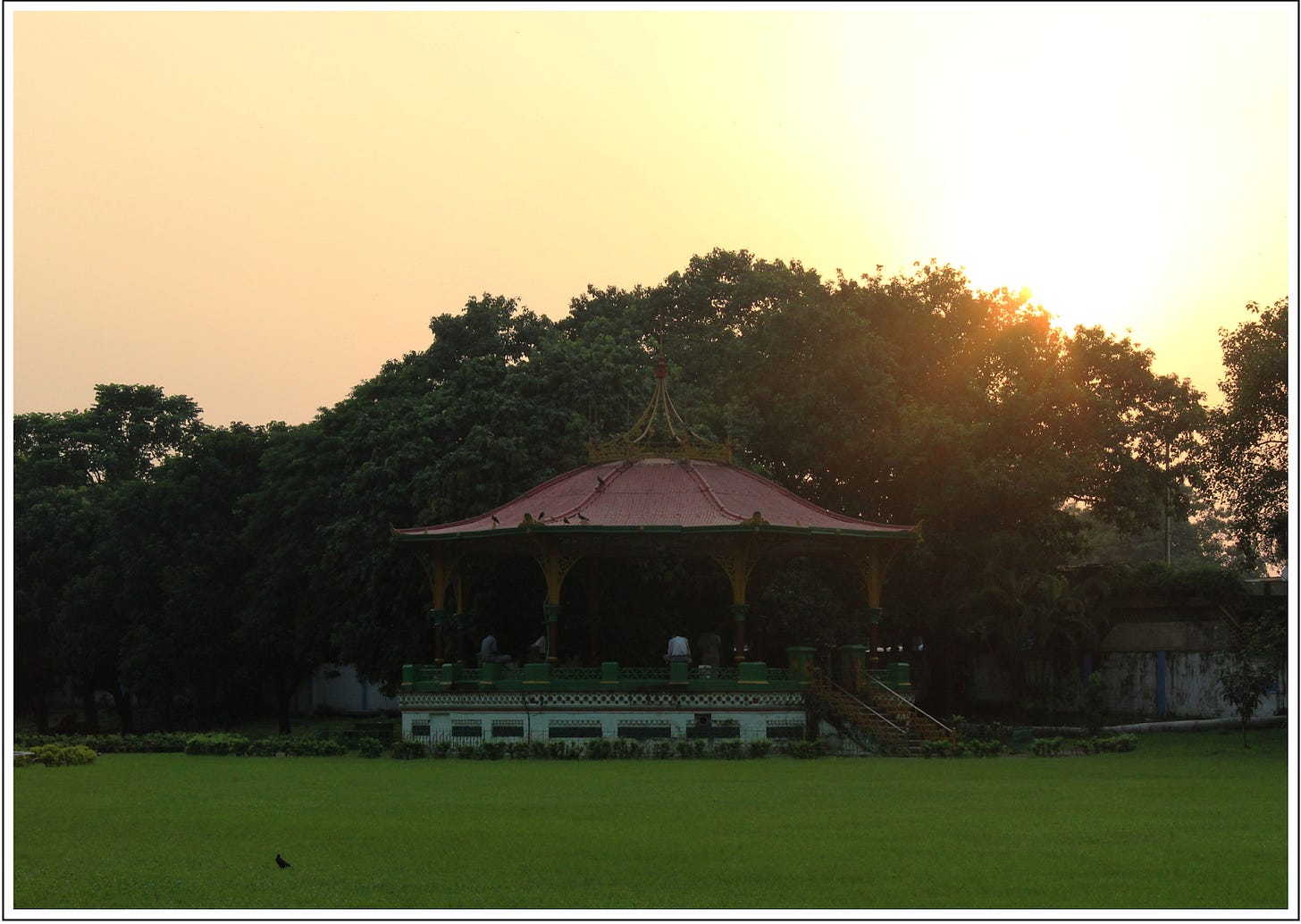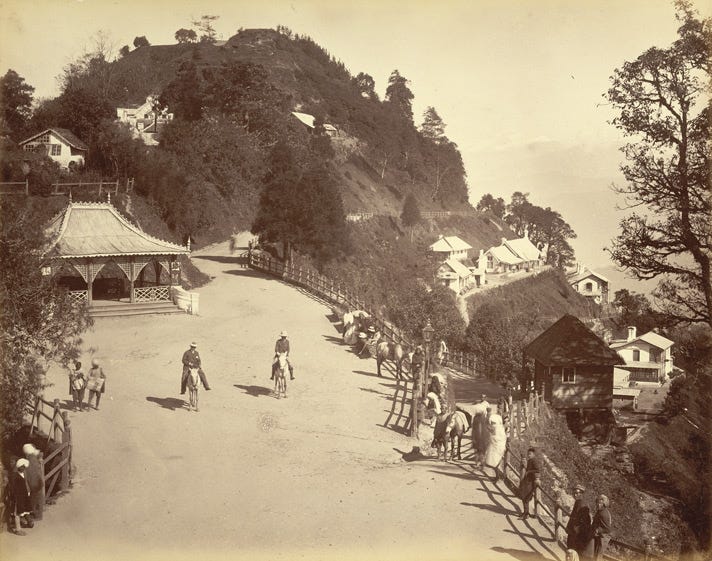In this issue of Accord, we take you through the history of bandstands - the pavilions for music scattered about South Asia. This is followed by an interview with a budding, young pianist from Bangalore - Syed Fateen Ahmed.
Dear readers, we encourage you to write to us or comment on this post with your feedback after reading Accord. Do share this newsletter with friends and family as well!
____________________________________________________________________________
The Bandstands of South Asia
If you take a stroll through Bangalore city’s famous Cubbon Park, you will come across a curious piece of architecture - the bandstand. Typically constructed with eight columns and a dome-shaped covering, these bandstands are present in numerous corners of British-occupied South Asia. These canopy-like shelters have a fascinating history, having been the sites of regular musical performances during the colonial era.

First, a little something about the origins of the bandstand. The industrial age in Europe was well underway in the latter-half 19th-century and there was a dire need for parks and green spaces in Victorian England, particularly in cities like London. According to studies, coal consumption in London rose from 3.5 million tons to 10 million tons between 1854 and 1880. Needless to say, air pollution was a serious problem. Along with the creation of these parks - the lungs of the city - came the establishment of bandstands. The first one is believed to have been erected in South Kensington in 1861, in the gardens of the Royal Horticultural Society. The ornamental domed design was inspired by the expansion of the British Empire into India. Bandstands acted as a central rallying point in the parks, and also served as music performance venues. These performances were immensely popular among park visitors - they served as a metaphoric breath of fresh air and a much-needed source of enjoyment. By the end of the 19th-century, nearly every public park and seaside resort had a bandstand of its own.
It’s no surprise then that bandstands sprung up in the cities of Britain’s colonies as well. The musical performances were likely to have been western classical ensembles or military brass bands. The elites of society would have been treated to this music as they promenaded about the gardens. The picture below from the 1880s depicts a street in Darjeeling, West Bengal. On the left side, you can spot the bandstand.

It is much less common to see musical performances at the bandstands today, though efforts have been made in some places to revive the atmosphere of music. One such example is the bandstand in Lalbagh Botanical Garden, Bangalore. According to local bloggers, there was a government initiative in 2007 to have live music performed at the bandstand every weekend, from 6 am until 8 pm. The musical styles ranged from jazz to jugalbandis. Sources differ on the year in which the Lalbagh bandstand was erected (likely between 1858 and 1874). It was renovated in 2003 using a traditional Indian wood-building technique called arukuduma.

Likewise, the bandstand in Cubbon Park, Bangalore has seen a recent spurt in cultural performances (not limited to music) by school children, after its renovation in 2015-16. Mumbai’s Cooperage Bandstand was restored in 2017, 150 years after it was set up, and has been thrown open for performances. The Pherozeshah Mehta Gardens in Mumbai (also known as Hanging Gardens) features a bandstand too, though it is more likely to be identified as a “pavilion”. Here’s a video of the Indian Navy Band performing “Hawa Mein Udta Jaaye” from the film Barsaat at the Hanging Gardens pavilion in 2012.
In Sri Lanka too, bandstands can be found in the large parks or horticultural gardens in the cities. There is one in the Viharamahadevi Park in Colombo (formerly known as the Victoria Park). Mr Arun Dias-Bandaranaike, a resident of Colombo with a background in radio and television, shared with Accord that the bandstand still stands though it is not being used as a performance venue these days. He recalled - “When I was very little, around the period of the middle 1950s, I remember being taken by my father to watch and listen to the Colombo Symphony Orchestra, which was conducted then by Mr Hussein S. Mohamed. That open-air concert was centred at the Bandstand at this very Park.”
Sitting atop Bandstand Hill in Singapore is the bandstand of the Singapore Botanic Gardens, still in its original form. Erected in 1930, it was once a popular venue for regimental bands to perform. Today it’s a favourite spot for wedding photoshoots, and is a landmark of the Gardens.

The bandstands across South Asia exist in various forms today - renovated, rebuilt, repurposed or fallen into disuse. Perhaps these gazebos may once again become focal points of musical activity.
____________________________________________________________________________
Bangalore’s rising star pianist, Fateen
Accord recently interviewed the wonderfully talented 13-year-old pianist from Bangalore, Syed Fateen Ahmed. Fateen and his mother, Dr Asma Kausar, joined us on Zoom to talk about Fateen’s journey in music.
Fateen began keyboard lessons at the tender age of 3, but difficulties finding good teachers meant that his musical education began in earnest at the age of 9, when he became a student at Natallia Piano Studio in Bangalore. In the five short years since, Fateen has developed into a fine musician, mature beyond his years. His impressive list of accolades includes several national and international prizes. He won 1st place at the 5th Kawai Junior National Piano competition (2018) and Mumbai Piano Day (2020). Through the Covid-19 pandemic, he has remained focussed on his music and won 14 international piano competitions held online around the world in the USA, the UK, Hongkong, the UAE, Israel, Greece, France, Italy, Hungary, Poland and Russia. He is indeed fulfilling his wish to see India on the world map of classical piano.

Having gained rich experience in competitions and masterclasses during the course of the pandemic, Fateen plans to spend the next year building his repertoire and exploring different composers’ music. A number of challenging works are on his list, including Chopin’s Ballades, Beethoven’s Sonatas and Tchaikovsky’s First Piano Concerto. When he is ready, he would like to participate in the Chopin International Piano Competition. His dream is to perform with a symphony orchestra – particularly Edward Grieg’s Piano Concerto in A minor, which he learnt recently.
Dr Kausar attributes his success to his teachers – Natallia Kapylova and Liudmila Drazhnik, both Belarusian pianists settled in Bangalore. “They know exactly the sort of music that will interest and suit Fateen. My kids are blessed indeed to be learning under very good teachers.”, she said.
"Fateen is talented and a very motivated musician. I'm happy to be his teacher, and I'm looking at the teaching process as a fun musical journey for both of us. With his hunger for knowledge and dedication Fateen is a source of inspiration for other musicians around him." – Natallia Kapylova
When asked about the experience of performing on stage, Fateen said – “I like to connect with the audience and share my music with them. I express my feelings and interpretation to them.” He also shared that he performed his first public concert in Mysore in February this year, at the home of Dutch Professor of Anthropology Jan Brouwer. The repertoire included a wide variety of pieces by J. S. Bach, Schubert, Mussorgsky, Prokofiev, Beethoven and Grieg. The encore was a delightful duet – Schubert’s Military March - performed with his younger sister, Falisha, who is a talented singer and pianist too.
"Fateen is a very good student. He has extraordinary artistic qualities that are rare to find. His classical singing classes have made his understanding of music much deeper! It makes me happy to see how motivated he is to work and study new repertoire. It's hard to find student with this level of responsibility, motivation and dedication.” - Liudmila Drazhnik
Accord was treated to an impromptu Zoom performance of J. S. Bach’s Prelude in G minor (BWV 861). Fateen brought out the counterpoint with sensitivity and performed the trills with light ease. He eagerly explained and demonstrated how he tries to incorporate the “harpsichord touch” when playing Bach’s music. He said - “In Bach’s time, they didn’t have pianos. They used harpsichords, on which the keys were very light. So I try to use the harpsichord touch, which is more detached and non-legato. The notes are slightly disconnected from one another but I use crescendo and decrescendo to maintain the line.”
Fateen’s favourite subjects in school are mathematics and physics. He also loves to play the guitar and enjoys sketching pictures of the composers he admires.
With so many laurels to his name, Fateen maintains a spirit of quiet confidence and modesty. What comes across above all is his dedication to his craft and his willingness to put in the work to hone it. The South Asian Symphony Foundation wishes Fateen the very best in all his endeavours!
Do visit Fateen’s website to get to know this intrepid, young musician better.
____________________________________________________________________________
Written by Aditi Bharatee




